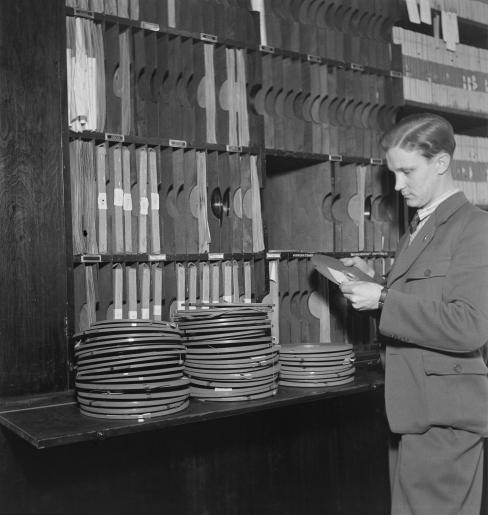For years museums have had a rigid idea of what their purpose is and how they should display their collections. The museum model has for a long time been to statically display artifacts behind glass. Singer-songwriter Regina Spektor puts it well in her song All the Rowboats, when she says she looks on woefully at violins encased in “glass coffins” that have “forgotten how to sing”. In this environment the artifacts lose their context and are quickly passed over by museum visitors. There is a disconnect between the visitor and the history that the museum is trying to convey. In his book Mickey Mouse History, Mike Wallace addresses a study that finds that people do not go to museums for two main reasons: Because they find them irrelevant and/or intimidating. Public historians are tackling these two problems by fostering interactivity through technology to bring the past and present together, and to show how they create the future.
The problem of visitor disconnect is being approached by museums in several different ways. Some, like the National Civil Rights Museum, are taking a more traditional approach by exhibiting a 1950s segregated bus with a mannequin in the driver’s seat that tells boarding visitors to “go to the back” of the bus (Wallace). Others are utilizing technology that is already in the pockets of a majority of visitors: Cell Phones. The Seattle Art Museum is introducing guided cell phone tours to its visitors. Rather than museums dealing with expensive and cumbersome in house equipment, visitors can dial a phone number to listen to a tour. Others still are redefining the definition of the exhibit space. In his book, Public History, Thomas Cauvin talks about museums drawing new boundaries for their exhibits through their social media presence. Museum Twitter accounts are keeping followers up to date on event and exhibits. The benefit to this is the constant presence in follows feeds. People don’t have to view individual museums websites to keep up with what is going on. People are no longer even required to physically attend a museum to interact with the exhibits. This is, as Wallace says, challenging the idea of what “success” is for museums and their exhibits. Some public historians might resist this technology, but many are embracing it. Anna Harbine, head archivist of the Northwest Museum of Arts and Culture, encourages researchers to utilize the archives vast digital collection before visiting the physical archives. Technology is breathing new life into materials that would otherwise remain locked within their refrigerator homes that are the archives.

Source: Wikimedia Commons
Perhaps the epitome of technological innovation utilized by museums to address the visitor disconnect, is the podcast. The podcasts is a single solution to many of the problems that museums are facing. Podcasts’ content is accessible and by its nature prepares listeners to learn. Archived audio materials are being rediscovered through the medium of the podcast. Recordings that would have once gone unheard, are being curated for a wide audience. Podcasts also address the problem of conveying a message to museum visitors. Wallace points out that the environment of the museum is not an ideal place to teach people. People are not ready to learn or address controversial topics while standing over an exhibit. The podcast however, provides an informal and approachable medium that invites people to think about and put exhibits into perspective.
The changing terrain of the museum may seem unorthodox to some. The Met having 2.46 million twitter followers may seem strange and the Smithsonian having almost 500,000 YouTube subscribers might be surprising. Technology is, however, bringing history to the public like never before. It is challenging and changing the role that museums play in the consumption of history. Technology is making museums and the history that they house accessible and is bringing that history into the context of today.